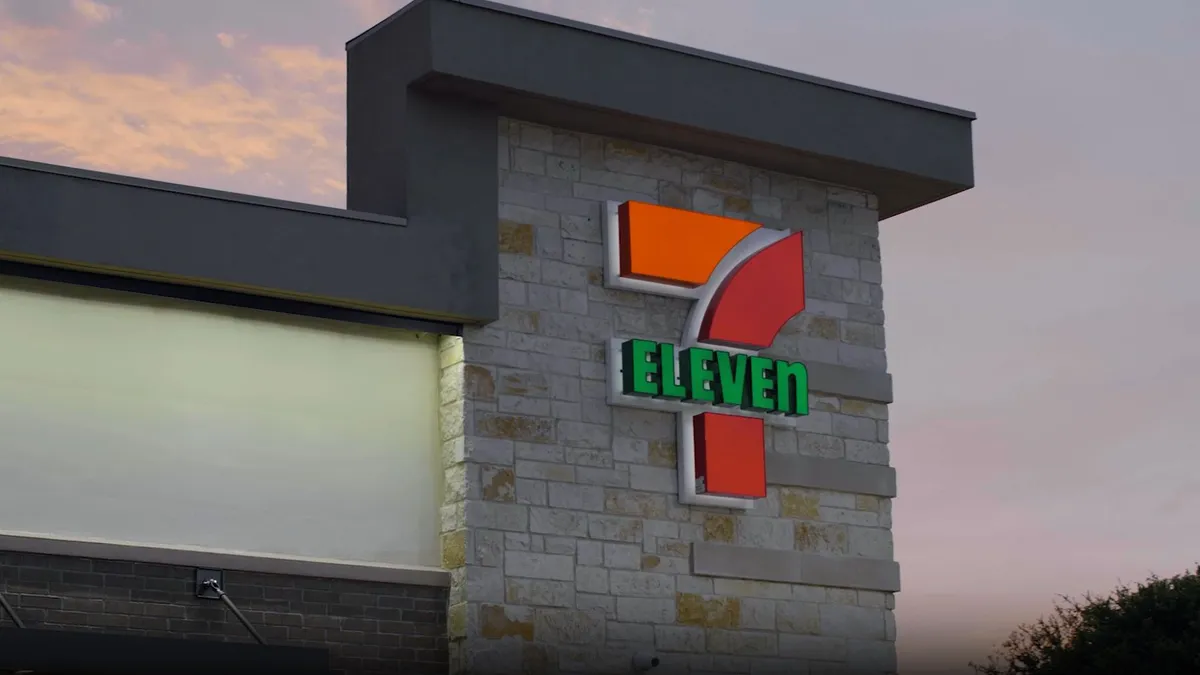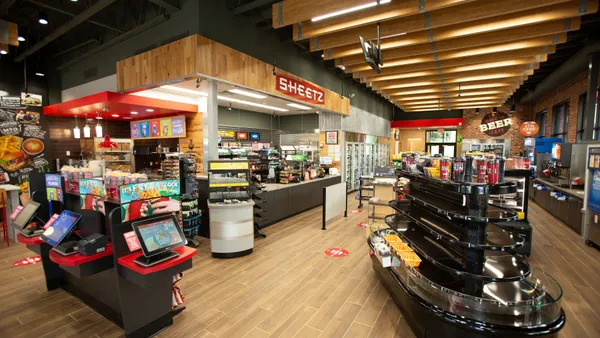While customers are used to thinking of c-stores as roadside destinations, increasingly the retail spots are appearing in airports and hospitals as well as at college campuses and sports arenas — anywhere lots of people may need to pick up a few items or just stave off boredom.
C-store operators are adept at selling fast-moving goods in tight spaces, and their experimentation in these non-traditional locations might help prepare c-stores for the future of mobility.
Frank Beard, head of marketing for Rovertown, noted that while convenience stores without gas are “almost unthinkable” for many people, chains need to start thinking about that possibility.
“There’s an energy transition lurking, [and c-stores] don’t stand to benefit from EVs like internal combustion engines,” he said. “What are you going to do?”
Beard said he would like to see stores looking into places like amusement parks and bringing automated tech with them to boost convenience.
The unique world of airport c-stores
Airport c-stores are familiar sights already for many consumers.
Hudson News operates more 1,000 stores in airports in North America. After starting at New York’s La Guardia in 1987, the retail chain expanded to other major airports in the following decade.
Travel convenience store Stellar News followed suit in 1988. Relay also has some North American locations, although its retail footprint is more common in Europe.
Some big-name chains have tried their hand at the airport life as well. The largest c-store chain in the world, 7-Eleven, began opening airport locations in 2015, starting with Los Angeles International Airport.
“They are all about the coolers and the roller grills,” said Alan Gluck, senior aviation commercial planner for ICF, a consulting and technology services company.
But 7-Eleven is not alone. A Circle K is at Edmonton International Airport in Canada.
There are some benefits to opearting airport locations. Air travelers are more likely to be well off and dwell time in airports can have customers waiting around for hours.
“Yeah, there’s money to be made in airports,” Gluck said, “and that’s really one of the best reasons.”

But airports aren’t ideal locations for every c-store. “There are huge differences between operations in an airport and operations on the street,” said Gluck.
For example, most airport stores are open constantly. “With rare exceptions, in really tiny airports, you are open every day,” he said.
Another place where airports differ from more traditional convenience locations is around crime. “Airports are a great place to do business because you don’t have armed robberies,” said Gluck. “They don’t happen in airports.”
The flip side is that the hiring process is much more stringent because workers need to be approved by the Transportation Security Administration.
Before retailers can build an airport spot, they have to be selected for a spot in the terminal through a competitive process, though specifics can vary from airport to airport.
Gluck pointed out that many airports try to give their patrons a local feel and may choose retailers that are integrally linked with the area. As an example, he pointed to the airport in Kansas City that included multiple barbecue restaurants.
Beard agreed with Gluck about the local feeling. Take the airport in Des Moines, he said, “how many people would laugh and smile if there’s a Kum & Go in the airport?” He added that many metro areas have local c-store brands that travelers are familiar, and those retailers could be an excellent addition to the local airport.
While building or renovating a traditional c-store can be a heavy lift, construction in airports is even more time-consuming and expensive.
“Right now, on the West Coast, it’s running in the neighborhood of $1,500 to $2,000 a square foot,” said Gluck. By comparison, at the end of 2022 retail construction in New York City was just under $500 per square foot, according to Statista.
The high building prices come not only from materials but also from getting a good operator to build in that environment. It can be even more difficult if an entire area is getting renovated or built at the same time, because that causes competition among the retail properties for experienced contractors.

Sports arenas
Another place customers might see a convenience store out of its normal element is in sports venues. Many of these locations are run by the company that provides refreshments. For instance, the Seattle Mariners’ Walk-Off Market in T-Mobile Park uses Amazon One palm-scanning and Just Walk Out cashierless technology and is operated by the team and Sodexo Live.
But that doesn’t mean traditional c-stores don’t take part too. In Los Angeles, the Dodgers first partnered with ampm in 2015 to put one of its stores in Dodger Stadium, on the field level. GetGo Cafe + Market opened its doors inside PPG Paints Arena, home of the Pittsburgh Penguins, on April 21, 2021.
The c-store locations in stadiums, especially, have an even heavier need to offer a quick in-and-out experience than street locations, said Beard. And this makes these particular non-traditional sites better matches for the burgeoning automated checkout technology industry than typical c-store locations.
Frictionless checkout company Zippin has stores in Allegiant Stadium and Nissan Stadium, and T-Mobile Park isn’t Amazon’s only arena location.
“You go to a stadium, spend all this money to see a show, see a game, and god forbid you want a beer,” Beard said. “You miss 30 minutes.”
That time — especially if fans miss an important play or their favorite song — has an economic impact, since the tickets can sometimes cost hundreds of dollars.
“Fans pay to be in the stadium and make decisions about whether or not to leave their seat based on their ability to get back without missing anything,” said Barry Johnson, vice president, Just Walk Out Technology at Amazon. “Fans much prefer to quickly grab their food and beverage and get back to the event.”
Seattle Mariners fans bear out Johnson’s observations. After the first Walk-Off Market opened in summer of 2022, the stadium is adding three more such stores to the grounds. GeekWire reported that the first Walk-Off Market served more customers than any other concession area in the stadium.
Likewise, Zippin noted that its shop in Gainbridge Fieldhouse, home of the Indiana Pacers, sometimes sees as many as 3,500 customers per night – nearly 20% of the stadium’s maximum capacity of a little over 18,000.
Yesway, which opened an Allsup’s Express Grab & Go at Texas Motor Speedway at the beginning of April, is using a slightly different technology to do the same thing. The store, which sells Allsup’s famous burritos as well as a variety of drinks and event necessities, such as sunscreen and pain relievers, will use handheld card readers that will allow workers to check out customers quicker.
Beard said he really likes the decision to put Allsup’s in the speedway grounds, especially since it’s such a strong brand in the South.
“People swear by the Allsup’s burritos,” Beard said. “It’s iconic food, [a brand] that’s put a smile on faces for decades. I love the idea, a presence in a high-profile location.”




















